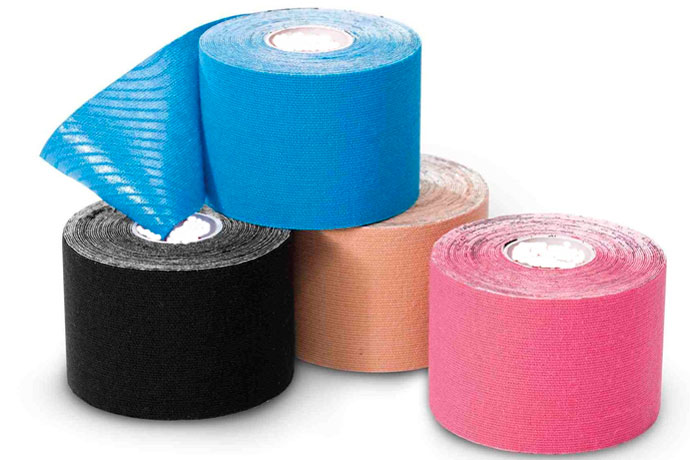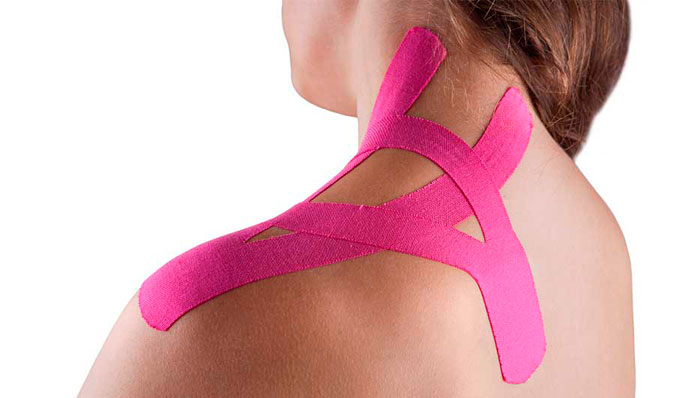The Kinesio Taping technique was proposed by the Japanese chiropractor Kenzo Kase in 1973. This is a novel direction of rehabilitation medicine which has been used for years by sports physicians and physiotherapy specialist all around the world.

Kinesio Tapes are elastic bands made of cotton fabric coated with allergy-friendly acryl-based adhesive gel whose action is activated by body temperature. Due to a special elastic layer, physical characteristics these bands are similar to skin extensibility properties. Tapes are applied to skin at the affected area in the course of a special procedure, and have an anesthetizing, anti-inflammatory, lymphatic drainage, massaging, dynamic, relaxing and stabilizing action. Tapes remain attached to the skin for up to five or seven days, they retain their therapeutic effect 24 hours a day, do not restrict movement and do not obstruct showering or bathing.
Depending on the kind of disorder, Kinesio Taping may either be used as a stand-alone therapeutic technique, or in a combination with physical or balneological therapy.
Indications to Kinesio Taping:
- hematomas and bruises of soft tissues;
- sprains and strains of ligaments;
- dislocations and incomplete dislocations of joints;
- epicondylitis;
- scapulohumeral periarthritis (shoulder pains);
- pains in the cervical, thoracic or lumbar areas of the spine or in joints;
- platypodia, hallux valgus;
- plantar fasciosis (heel spur);
- to improve muscle endurance during sports activities;
- postural disorders, scoliosis;
- edema of any localization (traumatic, lymphatic, venous edemas) including post-operative edemas associated with oncological disease and pregnancy;
- cicatrical skin changes;
- stomach pains following an endoscopy surgical intervention.

Contraindications:
- skin diseases;
- allergic reaction to acryl, idiosyncrasy;
- damaged skin in the area;
- first trimester of pregnancy;
- acute thrombosis of deep veins.



